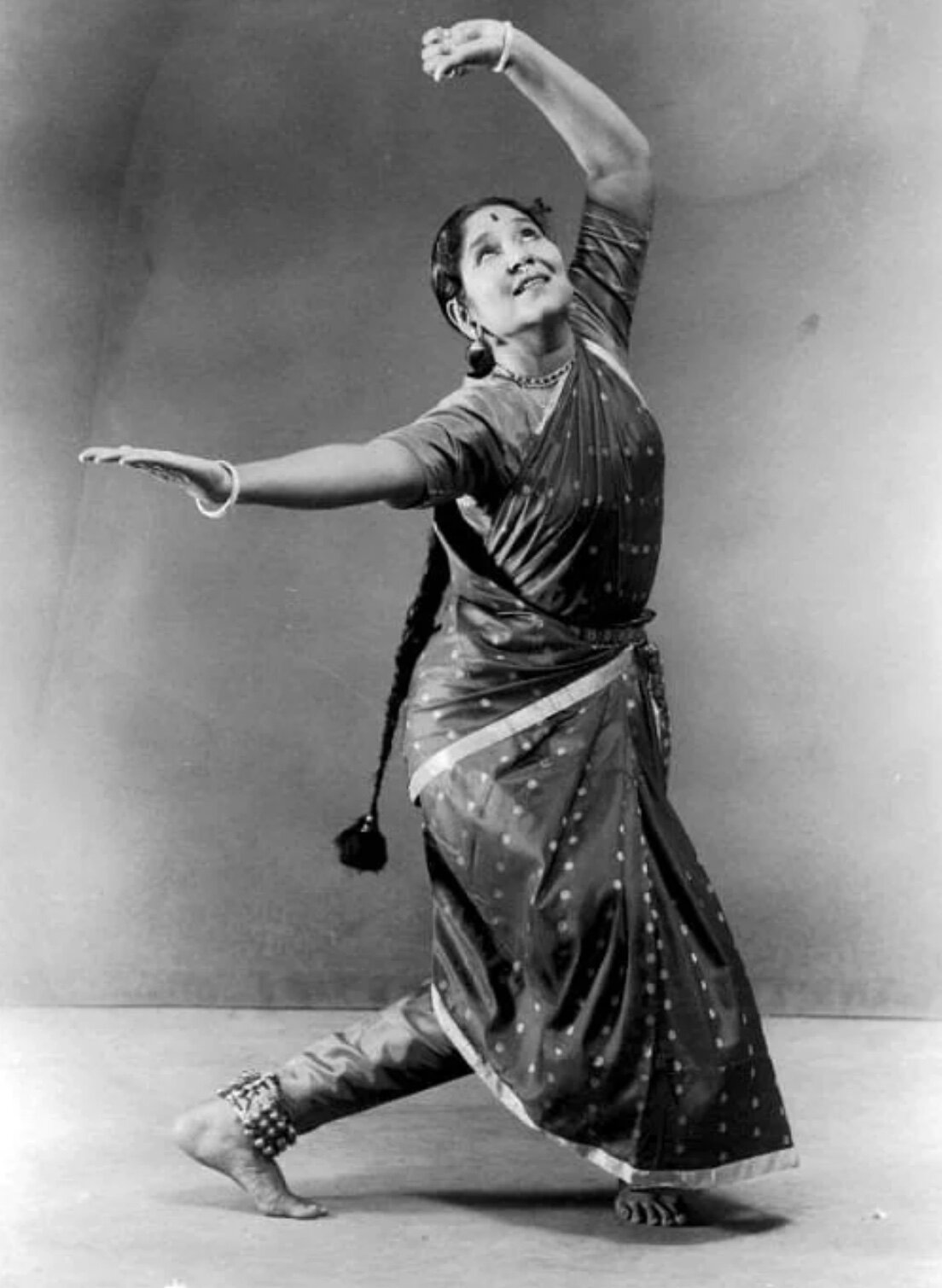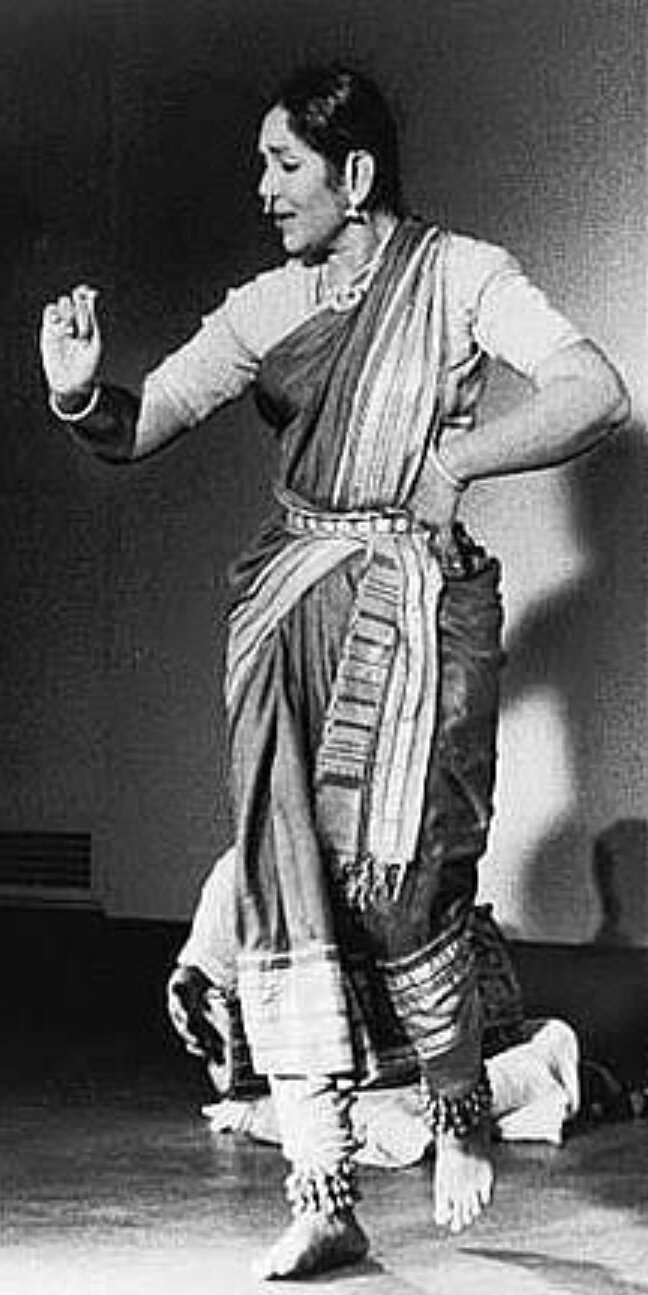Balasaraswati and the devadasi tradition: Women’s History Month in Dance, 2021
Women’s History Month in Dance, 6, 7, 8. The place of women in dance takes on other facets when we consider the role of the Indian devadasis: women dedicated to the temple by matrilineal succession. Some devadasis were - and perhaps still a few still are - temple courtesans or prostitutes; a moving chapter in William Dalrymple’s “Nine Lives: In Search of the Sacred in Modern India” (2009) profiles one of them. This aspect of the devadasi tradition became the object of reform during the later years of the British Raj, less because of the British than because of the Indian Theosophical Society, keen to transform and modernise areas of Indian sociology. But many devadasis - including some who were never given to men for sex - were the foremost practitioners of music and dance. They were what Europeans came to know as bayadères; in some of whom the Indian performing arts were refined to particular peaks. Whereas the Judaeo-Christian tradition has done much to separate dance from religious expression, the Indian (especially the Hindu) tradition has done the opposite: connecting the religious with the carnal.
Tanjore Balasaraswati (1918-1984) - almost invariably known as Balasaraswati or just “Bala” - one of the most legendary of all Indian dancers, came from the devadasi tradition of Tamil Nadu, the large southeastern state, whose classical genre of dance and music is Bharatanatyam. Although she chose dance at an early age, her mother and grandmother were devadasis specialising in music; she grew up with the musical traditions of the Tanjore Quartet, the four early nineteenth-century brothers in Thanjavur/Tanjore who famously advanced and propagated the traditions of Carnatic music.
To all who understood her work, it was and remains important that the devadasi tradition of Bharatanatyam was stylistically quite different from the now well-propagated academic tradition deriving from the Kalakshetra school. (I have heard people speak as if the two lineages of Bharatanatyam were and are at war, though I testify it is perfectly possible to admire both.)
Balasaraswati became celebrated during her teens; she was the first exponent of Bharatanatyam to perform it in other parts of India. Indian classical dance tends to alternate between abhinaya (the lyrical communication of narrative and character) and nritta (pure form): in those earlier parts of her career, Balasaraswati was noted for her nritta.
In her thirties, forties and fifties, she often danced internationally, while becoming honoured nationally. By this time l, her art largely consisted of anhinaya, which she performed with such revelatory poetry that dancers from Margot Fonteyn to Merce Cunningham were overwhelmed by her artistry. (Fonteyn is said to have said “I never knew what dancing could be till now.” I believe that Cunningham, always more keen in dance forms outside modern dance, at least twice travelled outside New York to see her.)
Lord Harewood (1923-2011), the present queen’s first cousin and a vital force in British cultural life for fifty years, writes in his marvellous memoirs “The Tongs and the Bones” (1980) of his pride in presenting her at the Edinburgh Festival in the early 1960s; he was proud to announce her as one of the three greatest dancers in the world, alongside Galina Ulanova and Margot Fonteyn. (I suspect Ulanova was retired by the time he said it, but no matter.) He - who also had important friendships with Benjamin Britten and Maria Callas - looked on Bala as a friend (as he did the Carnatic singer M.S.Subbulakshmi). He delighted in having found - at last - a dancer for whose feet no floor could be hard enough; and those feet were bare.
In her late fifties, Balasaraswati was filmed by the great director Satyajit Ray - but the result, his film “Bala” (1976), is a disappointment, reportedly because he was expecting to be able to do multiple takes whereas Bala, at that stage of her career, did not want to repeat herself. Other films of her exist, but they are hard to find.
Yet “Bala” had also been a devadasi in the sexual sense, given without love in youth to a man she did not choose or love. He was capable of abusing her. In her later years, she was speaking to one of her longterm Chennai students who had married a man she loved and had children, when her eyes filled with tears: a good marriage had never been on the cards for a devadasi.
My source here is the Chennai dance teacher Nandini Ramani, whom I met in India in both 2012 and 2015. She was one of the two daughters of the Sanskrit scholar V. Raghavan (1908-79); she told me how “Bala” was selected by one high-ranking customer as his exclusive sexual property. One of the many stories Nandini had to tell me was that this man at least once hit Bala across the face - accusing her of looking at another man.
When we think of the rival issues in this life - the centuries-old musical traditions of Thanjavur (Tanjore), the age-old tradition of depriving women of choice in their sexual partners, the pride of the true artist in bringing her genre far beyond its original region, the difficulties for many of us in comprehending the rival lineages of Bharatanatyam - we begin to see different facets of women’s place in history and in dance history.
Other complexities emerge : Bala is the subject of a handsome and valuable scholarly biography by her son-in-law (2009), Douglas Knight; but he scarcely mentions Dr Raghavan’s two daughters, who were Bala’s students from their early childhood: Nandini Ramani and her sister, Priyamvada. This may be connected to Bala’s reported dislike of her son-in-law, whom she would refer to as “trash”; Knight, understandably, also avoids saying that his wife, Bala’s daughter Lakshmi, was not much of a dancer. (People around the Indian dance world roll their eyes as they tell you this.)
Lakshmi had, so Nandini Ramani insists, both good and bad sides. But the bad sides led her to reject, and then make Bala, reject people who had been central to Bala's art. In particular, Bala had worked for decades with the guru Ganesan Nattuvanar. He came from a family of brothers who all took advantage of any money he made and who finally made him an alcoholic (they were drinkers too). It was in this stage of his life that Lakshmi began to scorn and reject him, and make sure her mother did too. Nandini and her friends, who looked after him to the end, found this hard to forgive.
Nandini and her sister had no other teachers than Bala and Ganesan. Bala taught only abhinnaya; but nritta, which (Nandini insisted) was a crucial part of Bala's dancing, was always taught by Ganesan, with great skill and precision.
Nandini, though she has always taught Bharatanatyam (I visited her at at her home in Chennai), had no hesitation in saying that it was her sister Priyamvada who was the exquisite dancer of the two. Priyamvada has lived since the 1960s in Montreal, Canada. She too has always taught, but I cannot help hoping that scholars have recorded her memories and her analysis of Balasarasawati and the evolution of Bharatanatyam.
#women’shistoryindance
Friday 5 March


